Tapeworms can be a major problem for cats. Learn about tapeworms, how to identify them, prevention, and how to treat them if you suspect your cat is infected.
Tapeworms in cats are long, white flatworms. They have mouths with hook-like attachments that adhere to the intestinal wall of your cat. They feed on nutrients excreted by your cat. They can reach a maximum length of 15 to 20 inches, while most reach about 8 inches when fully mature. As the tapeworm matures, it begins to lose parts of itself, which scientists call proglottids. The proglottids, around the size of a grain of rice, separate from the tapeworm's main body and transit via the cat's feces.
A tapeworm adult is composed of several proglottids, which are tiny segments. As a tapeworm matures within the intestine of a cat, these segments break off and enter the stool, giving the stool the appearance of white rice.
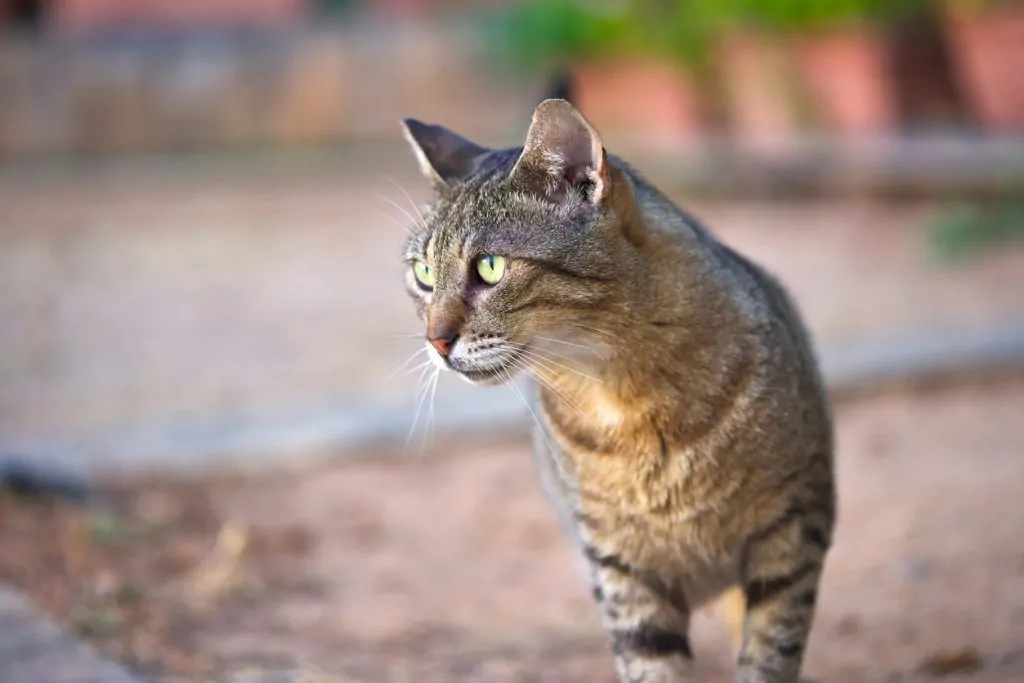
Tapeworms infect cats when they eat a flea, generally while grooming or consuming a small rodent that was infected with fleas. Tapeworms have a complex, multi-host lifecycle that starts with a flea as the intermediate host for tapeworms, meaning that the eggs must be consumed by a flea for the tapeworm to mature. The larva will then mature inside of the flea. The cat then ingests the flea. As the flea is digested, the tapeworm is freed, hatches, and can infest the cat, thereby completing its lifecycle.
Tapeworm infections are prevalent in areas with abundant fleas and among outdoor-going cats. While tapeworm infection is more common among outdoor cats, indoor cats can become infected as well. Proper flea management and prevention are critical for both indoor and outdoor cats.
Tapeworm eggs look like small white, rice-like segments moving on or around the hairs around your cat's anus. You may see your cat lick or groom its rear end more frequently than usual. They may also "scoot" by dragging their rear end along the ground in an attempt to itch. The same type of rice-like pieces are more frequently observed on the surface of new feces from cats. Occasionally, a cat will vomit a tapeworm or segments of a worm.
As tapeworm infections seldom cause cats to become visibly ill, they can be hard to identify. Your pet may also experience weight loss, a dull coat, and seem lethargic. If you suspect that your cat has tapeworms, you should see a veterinarian immediately. If your cat has been diagnosed with a tapeworm infestation, he or she likely probably has a flea infestation, which can cause a variety of health problems and will require treatment.
There are various tapeworm treatments, not all of which are of the same caliber. We recommend that you speak to your veterinarian before you attempt to treat your cat. Most treatments either kill or paralyze the worm while still in your cat’s digestive tract. Depending on the treatment used, you may not see any worm segments excreted in the stool.
Tapeworms come from fleas. No amount of treatment will help unless the source of the problem is resolved. There are a wide variety of flea control strategies available. Talk to your veterinarian about options that will work best for your cat and your family.
Most puppies or kittens we see with Parvo are pets picked up from breeders or shelters – they cargo and transport pets from city to city. Making sure pet owners bring the pet in as soon as possible for an exam to start a vaccination series is key. A lot of pet owners tend to wait because their breeder said they’ve had their vaccinations. Often, breeders may have given a half vaccination dose, or an incorrect one was given.
Canine parvovirus (CPV) and feline panleukopenia virus (FPV) are two important viral illnesses that are caused by viruses in the genus Parvovirus. CPV has been demonstrated to infect and cause disease in both cats and dogs, but FPV has only been proved to impact cats. If a real infection develops, both strains of this infectious virus can be extremely dangerous for pups and kittens, often necessitating hospitalization at a 24-hour facility. While more prevalent in puppies and kittens, CPV and FPV can also infect unvaccinated adult dogs and cats.
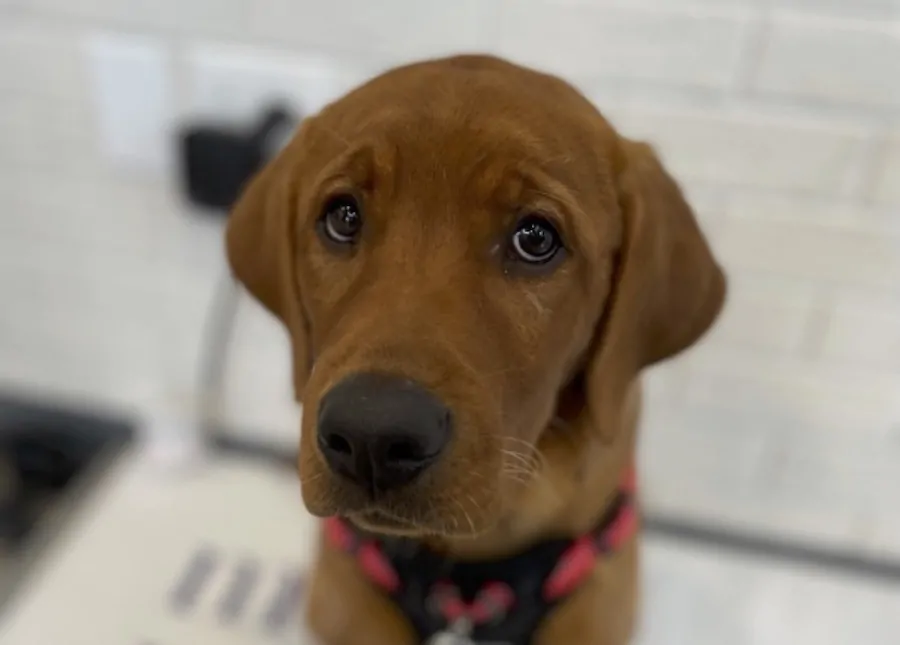
Fever, melancholy, and appetite loss are some of the early clinical signs in both dogs and cats. As the illness develops, your pet may experience vomiting and diarrhea, which may become bloody. Young puppies infected with the parvovirus are particularly susceptible to inflammation of the heart.
If your pet is experiencing these symptoms, you should seek veterinary care quickly. Veterinarians have the capability to detect low white blood cell count (leukopenia) in dogs and cats, through the deployment of blood work diagnostics. A parvovirus fecal test will be advised by your veterinarian if your dog or cat displays any of these symptoms.
CPV and FPV are excreted from the gastrointestinal tract after infection in a susceptible pet, showing that feces can spread this virus to other pets. When dogs and cats are infected, shedding can happen before clinical signs appear.
If you suspect your pet has parvo, It is important to keep the pet isolated from other animals at home until their vet check. It's also important to bring a fecal sample to their appointment.
The most vulnerable animals are those cats and dogs who have never had a parvovirus vaccination. Be mindful that some dog breeds are more susceptible to the canine parvovirus. These dogs include Pit bulls, German Shepherds, Rottweilers, and Doberman Pinschers.
Note - Parvovirus protection extends to newborn puppies and kittens if their mother was vaccinated. However, this defense wears off with time. Therefore, it is important to schedule an appointment for parvovirus vaccination.
Correct vaccination of puppies and kittens is crucial for preventing many illnesses. The core recommended vaccinations for both puppies and kittens include the vaccine against canine parvovirus and feline panleukopenia virus (also called feline distemper).
Between the ages of six and sixteen weeks, puppies and kittens undergo several vaccinations. To help prevent the spread, If you have come in contact with an infected animal, please be sure to shower and change your clothes before coming in contact with other pets.
Parvovirus does not have a specific antiviral medication; instead, veterinary care is used to give the patient time to recover from sickness. Intravenous fluid therapy is crucial because the animal dehydrates from vomiting, diarrhea, and loss of appetite. Your vet may also recommend providing the patient with electrolytes, probiotics and anti-vomiting and nausea medications.
To decrease the likelihood that they will come into contact with an infected dog, we urge puppies to stay away from places where dogs congregate, such as dog parks, until they have had all of their vaccinations. In shelters, doggie daycares, and breeding facilities during a parvovirus outbreak, sufficient environmental disinfection with a bleach solution is required. The CPV virus can linger on surfaces like kennels and food and water bowls for up to a year if they are not completely decontaminated.
Depression in dogs is tricky to diagnose definitively. A good place to start is by ruling out all potential diseases and illnesses. We also check with pet owners for potential reasons for depression like a littermate passing away, owners being sick, a change in location, etc.
There is no denying that these animals' moods can occasionally drop below what they typically display; this may cause them to act differently as well as feel more depressed than usual. Keeping these guidelines in mind, it's crucial to attend to your pet's mental and emotional requirements just as you would their physical ones. Here are some details concerning canine depression and suggestions for how to look after your pet's mental wellbeing.
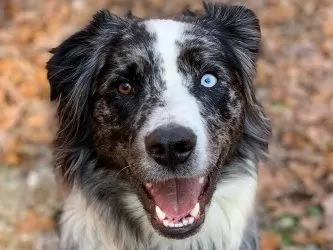
While the symptoms of depression in humans are very well understood, it is unclear if dogs experience the same emotions. Though more research must be done on this subject before any firm conclusions can be drawn, several studies have indicated that when dog participants were exposed to depressing images or noises, their heart rates elevated, and they had symptoms like those reported during clinical episodes of sorrow.
Just like us, dogs have different emotions from time to time. When anything recent has caused them to be upset or stressed out, they may occasionally appear melancholy and disappointed; nevertheless, other times, they may appear enthusiastic and happy-go-lucky as if nothing is wrong at all!
When compared to human depressive symptoms, those in dogs are typically more erratic. A dog may occasionally struggle with their mental or emotional well-being, but this is less frequent than human-based illnesses.
Although the exact causes of dog depression are still being investigated, it is believed that some form of change to their environment may be the initial cause. These changes consist of:
Dog depression can manifest itself in a variety of ways. Among the most typical signs and symptoms include:
Helping your pup through the tough times is important, and they won't always feel like giving up. Luckily there are ways to get them back on their feet! The following list includes some of our favorites:
If your dog continually displays any of the above symptoms, or any other symptoms that you're concerned about, it’s important to seek veterinary care right away.
For depression or any other mental health disorder, early therapy is recommended. It's important to seek care as soon as you can, even though these symptoms typically don't necessitate an emergency visit (unless your pet is obviously sick). The sooner you get help, the more likely it will be to be successful in resolving these issues and preventing further ones from becoming worse than what was initially diagnosed.
When you come to see us, the first thing we'll do is rule out any underlying medical conditions or physical pain. Assessing your dog's comprehensive medical history and inquiries about their daily routine and environment are the first steps. If necessary, other diagnostic testing, including blood work, may also be required.
Your veterinarian can provide you with advice on how to make your dog feel better and more confident if they have detected depression in your pet. Additionally, it may be recommended that your pet be put on a trial of antidepressant medication, as needed.
It's important for pet owners to be aware of the signs of depression that their dog can exhibit. Do not be reluctant to seek professional assistance if you notice your dog displaying any weird behaviors or emotions; doing so could save both of you from experiencing a more serious ailment.
Call My Pets Wellness right away if you suspect your dog may be depressed or is displaying a new symptom. We'll work to restore their health! Choose your Veterinary Hospital Location to book an appointment.
We have been made aware of a confirmed case of Canine Influenza Virus (CIV) in the Greater Nashville Area. Studies have shown that 80-90% of dogs exposed will become infected and Influenza is often a severe and, in some cases, a fatal illness.
Dogs that contract Canine Influenza may develop symptoms including coughing, sneezing, nasal discharge, and fever, with symptoms often lasting 20-30 days. Severe forms of influenza are often seen in our most at risk populations (pediatric and geriatric) and will lead to symptoms of high fevers (104°F - 106°F), pneumonia, and respiratory distress.
The last time a severe outbreak occurred was in 2015 in Chicago. The best way we can prevent an outbreak like this is to get as many dogs as possible in the Nashville area protected from Canine Influenza and we want to do our part.
Vaccination for CIV requires a series of 2 shots, which normally costs $120 for both, but because this is a pet public health issue, we are slashing the cost & making each dose only $24. We know vaccination is the best way to counteract the spread of this virus and hope to help our patients remain ahead of the curve!
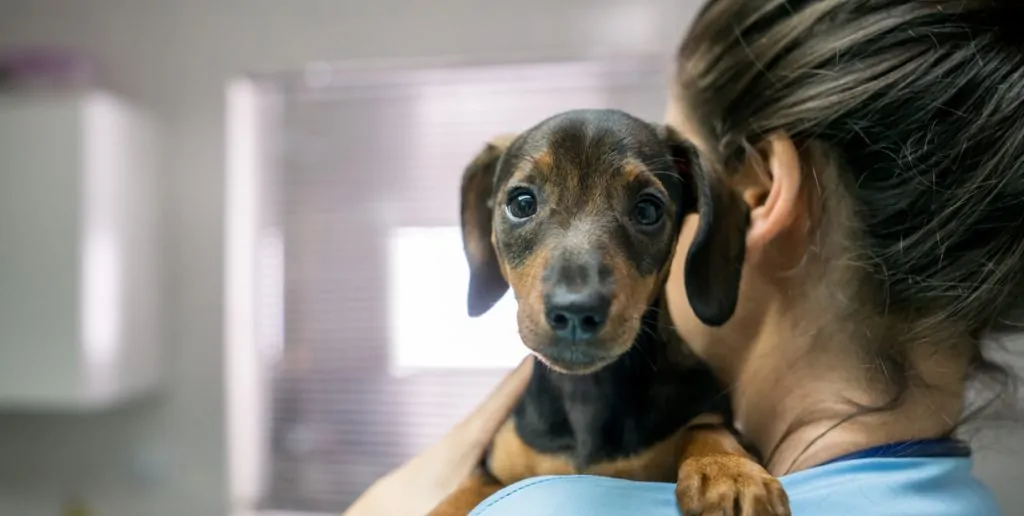
How to Help Your Pet Stress Less at theVet
Pet owners often notice that their pet is stressed during veterinary visits. Cats show stress with hissing, growling, tense crouching, and even vomiting or diarrhea. Even when they return home, disgruntled kitties may continue to exhibit stressed behaviors like refusing food and water or becoming withdrawn until they decide to forgive you. Stressed puppies may exhibit negative behaviors during vet trips such as pacing, whining, barking, or spontaneously relieving themselves but are usually ready to forgive and forget once they get home.
Regular veterinary visits allow vets to establish your pet's baseline so it is easier to identify any changes in their health. Early detection makes it possible for vets to treat health issues in the early stages and prescribe medications and lifestyle changes for chronic conditions before they become acute. Skipping the vet is not an option but there are ways to take the stress out of your pet's trips to the vet.
Most cat owners agree that using the right carrier in the right way is critical keeping your kitty calm at the vet. However, that is often dependant on your cat's temperament. With trial and error, most cat parents find that one or more of the following vet tips work for them:
If you have given up on your dreams of a shenanigan-free veterinary visit with your pup, there is hope. The best vet tip for your puppy is to make their veterinary visit fun. Here's how:
While your vet has their own methods for managing stressed pets, you can set your pet up for success at the vet with a little training and preparation beforehand. Relaxed and well-behaved pets allow vets to perform more thorough examinations and reduce risk of injury to your pet and your vet during medical treatments.
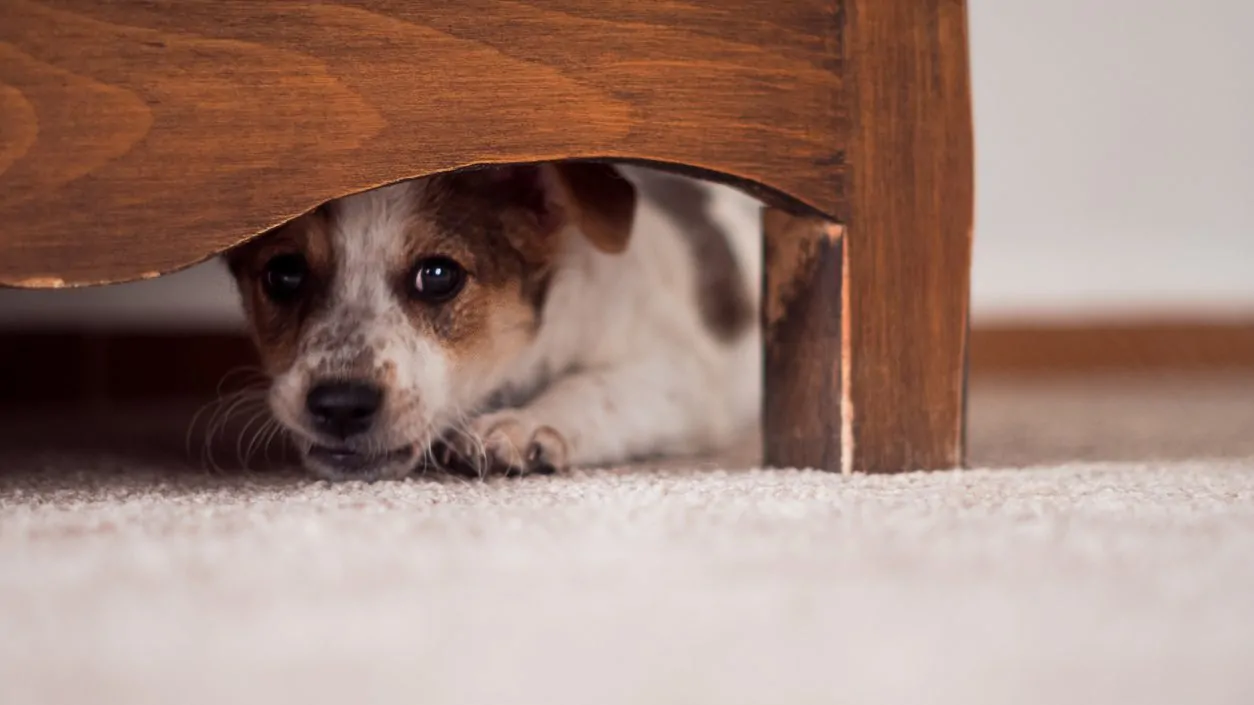
A pet owner never wants their furry companions to be unhappy, but sometimes it is unavoidable. Loud noises are among the top things that upset dogs. When scared by loud noises, dogs may bark, exhibit signs of distress, attempt to escape, or even damage property. Addressing your dog's noise aversion will have a positive impact on their mental health and yours. There are some basic steps you can take at home to make your dog more comfortable. If your dog continues to have problems, you should talk to your veterinarian about more advanced treatments.
Dogs enjoy having a safe, dark, and comfortable place to rest. This behavior may date back to when they were wolves seeking shelter in dens. A crate covered with a blanket is an excellent option. A closet or small room with the lights off and some blankets or dog beds will also work for larger dogs.
Children frequently carry security blankets or stuffed animals to make them feel safe. Dogs aren’t too different. If they have a toy they gravitate towards, place it in their “den” for them.
If your dog generally enjoys chewing, providing them a nice distracting bone or a lick mat is a great activity for them. Lick mats have grooves so that when you spread peanut butter, or something similar, the dogs must work to get the peanut butter out. This is a calming and rewarding activity for them, which may help to distract them.
Playing background noise can be beneficial. Brown noise has more bass and less static than white noise and might be a better option. It may also be beneficial to play classical music if your dog likes it.
Dogs communicate with each other and with humans through body language. Paying attention to how your dog is behaving, both before and during a thunderstorm, will help you understand which body markers they display when they are nervous. Knowing what their behavior means about their mental state is crucial to understanding how to help them.
While their behavior may seem inappropriate, it is rooted in fear. Instead of reprimanding your dog, the best thing you can do is speak to them in a happy and calm voice and try to reassure them. If they enjoy being touched, long steady slow pets are helpful.
If behavior and environmental changes aren’t enough, it may be time to visit a veterinarian. Depending on the severity of your dog’s anxiety, the veterinarian may recommend different medications. There are several medical options, ranging from calming pheromones to anxiety medications used in humans.
Phone: (855) 461-8259
Email: [email protected]